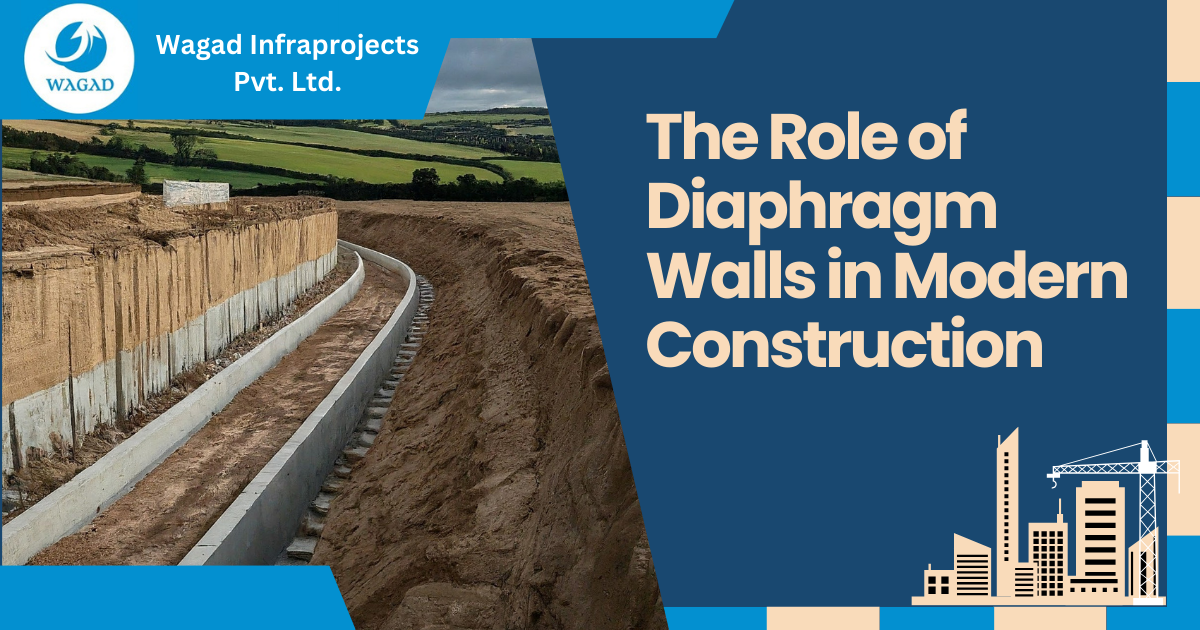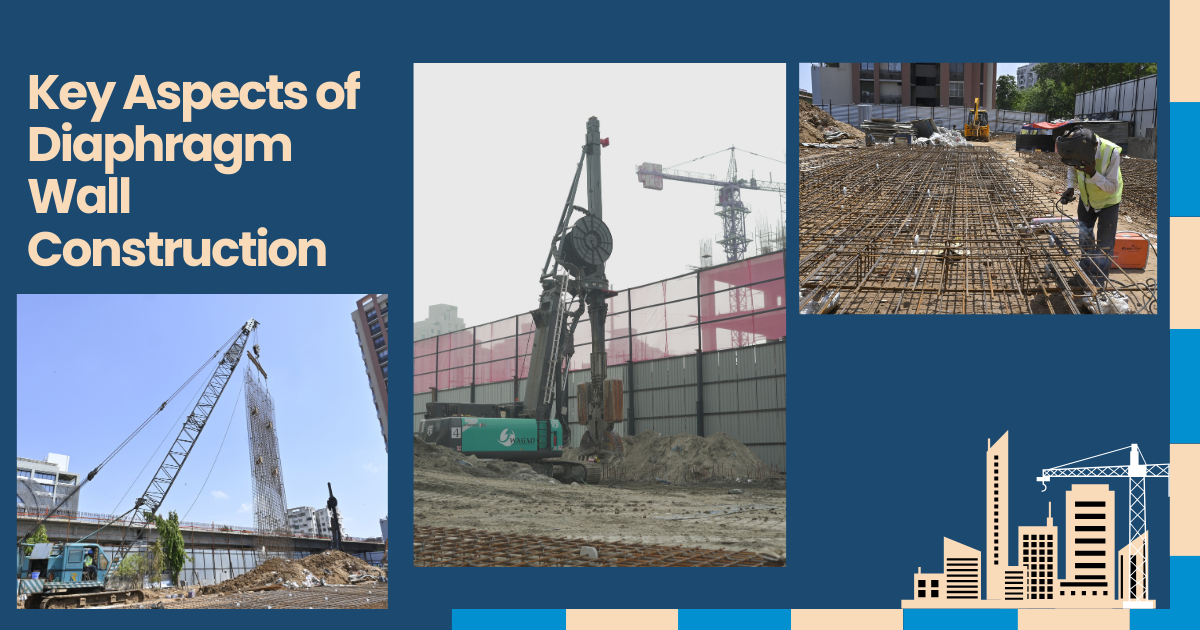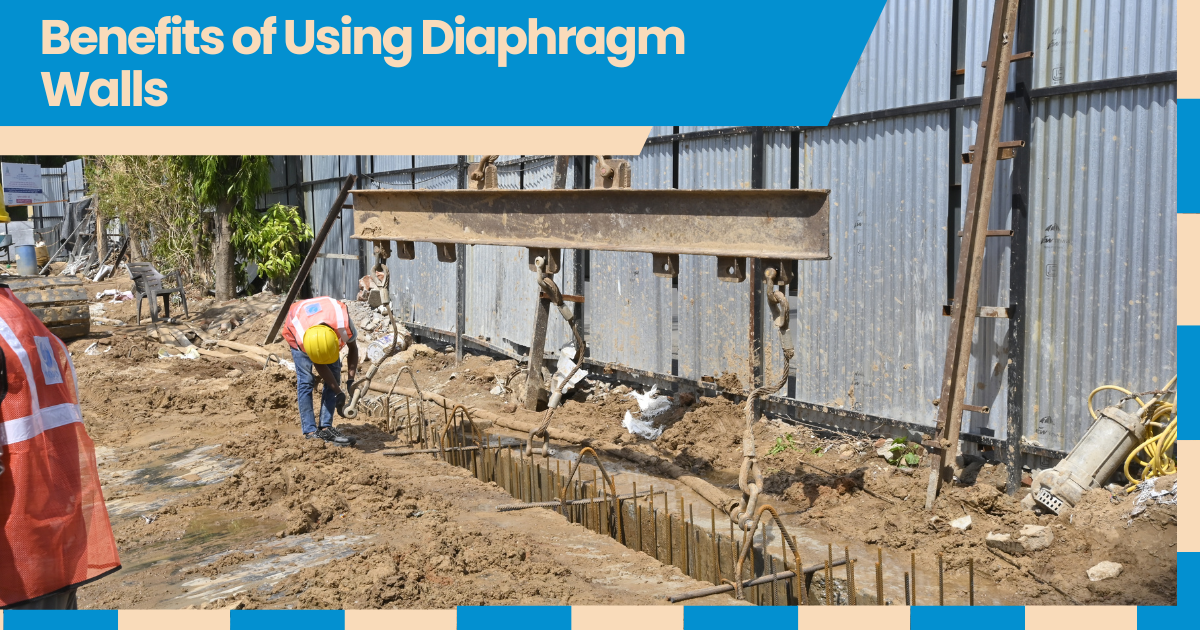
The Role of Diaphragm Walls in Modern Construction
Diaphragm walls play a critical role in today’s construction projects. These specialized structures are essential for ensuring stability during deep excavations and managing water infiltration. Whether it’s for high-rise buildings, underground stations, or large basements, diaphragm walls provide the necessary strength to handle the complexities of urban environments.
The Importance of Diaphragm Wall Construction in India
Diaphragm Wall Construction in India is crucial for maintaining project safety and efficiency. These walls are engineered to prevent soil collapse and control groundwater, especially in areas with challenging ground conditions. By offering a robust barrier, diaphragm walls secure excavation sites and support surrounding structures, which is vital in densely populated urban areas.
Key Aspects of Diaphragm Wall Construction

Serving as both retaining structures and foundational elements, diaphragm walls offer dual benefits in various construction scenarios. In India’s crowded cities, where land is limited, Diaphragm wall construction is indispensable for creating safe and stable underground spaces. These walls support deep foundations and effectively manage lateral earth pressures and water flow.
The Construction Process of Diaphragm Walls
Constructing diaphragm walls involves several precise steps. It begins with digging a trench, which is then filled with bentonite slurry to prevent collapse. Steel reinforcement cages are placed in the trench, followed by the pouring of concrete to form the wall. This process ensures a continuous, strong barrier capable of withstanding significant pressures. Success relies on specialized equipment and skilled professionals, both of which are crucial for effective diaphragm wall construction companies in India.
Applications of Diaphragm Walls in Indian Infrastructure
The versatility of diaphragm walls is evident in their widespread use across various Indian infrastructure projects. These walls are commonly employed in urban development projects like high-rise buildings, subway stations, and tunnels. They also play a crucial role in industrial projects, such as dams and reservoirs, where they provide essential support and prevent water leakage. Their ability to address both structural and environmental challenges makes them integral to large-scale construction efforts.
Benefits of Using Diaphragm Walls

Diaphragm walls offer numerous advantages. They provide a reliable solution for structural support and water-tightness, addressing common urban construction challenges. In India, where space is limited and ground conditions can be difficult, these walls ensure durability and efficiency. Their relatively fast construction time also helps accelerate project timelines while maintaining high safety standards.
Challenges and Considerations in Diaphragm Wall Construction
While diaphragm walls offer many benefits, their construction presents challenges. The process requires careful planning and precise execution, especially in crowded urban areas where existing structures must be protected. The availability of skilled labor and specialized equipment can also be a constraint. Although initial costs might be higher, the long-term benefits often justify the investment.
Conclusion
Diaphragm Wall Construction in India is a vital component of modern building practices, offering essential support for deep excavations and complex foundations. As urban development continues to progress, the importance of these walls in ensuring safe and successful construction projects becomes increasingly clear. For more detailed information on diaphragm walls and their applications in civil engineering, you can explore this comprehensive guide.